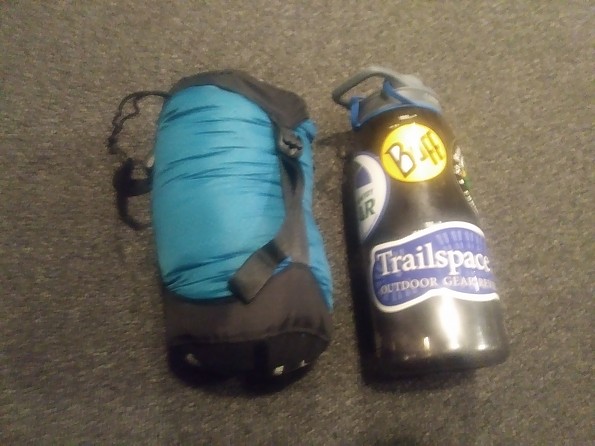Sea to Summit Traveller TrI 50°F
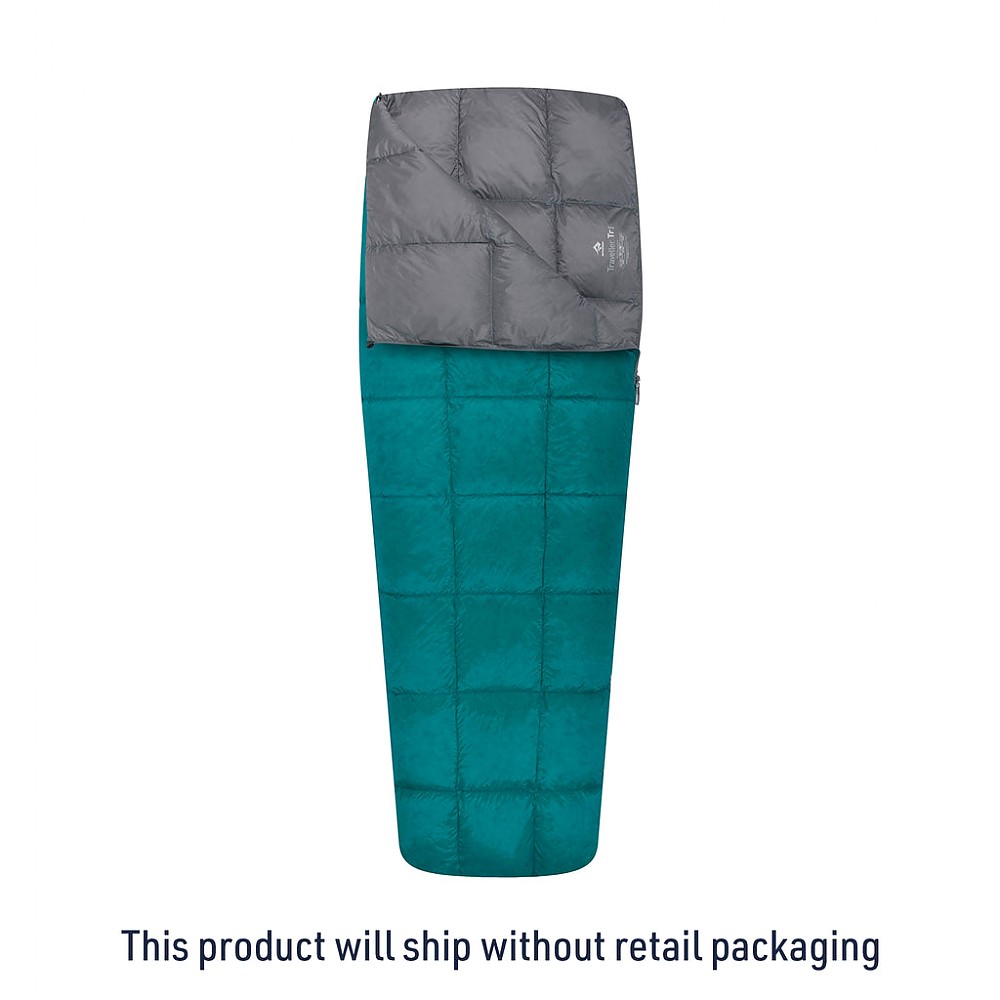
A versatile and quality piece of sleeping gear that can be used in many different ways and provide warmth even in slightly-bellow-rated temperatures. Good option for lightweight backpackers campers and travelers who sleep in various conditions and settings (hammock, tent, hostels, etc.).
Pros
- Lightweight
- Versatile (can be used in many forms)
- Good quality
- Warm
- Comes with a compacting stuff sack (see “cons”) and a storing square bag for longevity
Cons
- Won’t fit in the supplied compacting stuff sack. And if it does (which is super hard) it’ll get over-compressed, which isn’t something I recommend for down items anyway
- A bit pricey for a warm-weather bag, but it’s down, good quality, and lightweight so it kinda compensates
Context
I live in a tropical country and temperatures here hardly ever go below 30°F, even at the height of the winter and in the wilderness and rural areas where it’s always colder.
Therefore, I can do fine with mid-temp sleeping bags, added of other layers like clothes (base layer and others) and a hammock sock (e.g. my Outdoor Vitals Bugnet which serves double-duty as wind insulation and bug protection).
Characteristics
The Sea To Summit TR1 has proved perfect for my needs. It’s lightweight and compact compared to synthetics, and it can be used in different ways to accommodate for various situations.
The zipper is small but smooth and hardly ever snags. I like the quality of Sea to Summit stuff and I use many of their outdoor gear, also because it‘s lightweight and cleverly designed. Entry and exit, closing and opening are as easy and common as with any other similar product.
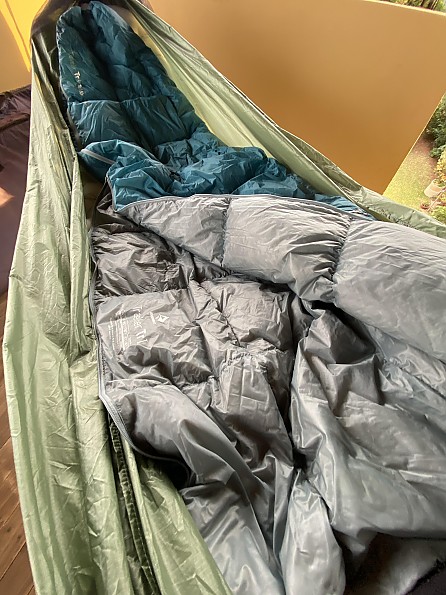
It’s well built and high quality, with moisture treatments and comfortable fabric throughout. The color is a bit flashy for my taste, but certainly not a deal breaker. I just prefer more conventional colors to blend into the wilderness, but that’s personal preference and the color is in fact modern and pleasant.
I didn’t test the moisture resistance and performance because I very rarely get my sleeping bag wet. Even when traveling and camping is stormy weather, I do my best to keep this item in specific away from humidity.
It’s gotten some abuse in the form of dust and rough use though, and after almost a year of constant use it’s looking as new. I keep it in a larger stuff sack, taken from an older sleeping bag, to avoid damage by over-compression (more on this later).
Versatility
The TR1 is not a conventional sleeping bag. It‘s more like the new style of “quilt bags”, with a full-length zipper and both ends open. It’s not square, though, but not radically mummy-shaped either. I got the large (I’m 6') and I like its roominess, I never felt like missing space nor coverage.
The ends have cinch cords, and can be closed in various ways to allow for the perfect protection/ventilation. Being a warm-weather bag, it has no hood, which I actually prefer because I’m always with a wool beanie or a hooded jacket or shirt when it’s really cold. It’s more convenient for hammock usage in my opinion.
If the intention is to keep it closed, though, a small knot around the string locker is needed to keep the smooth and soft cord from sliding open in the middle of the night, in case we push with the feet while adjusting or during sleep. I learned this the hard way and had to re-adjust a couple of times during the first night in the cold.
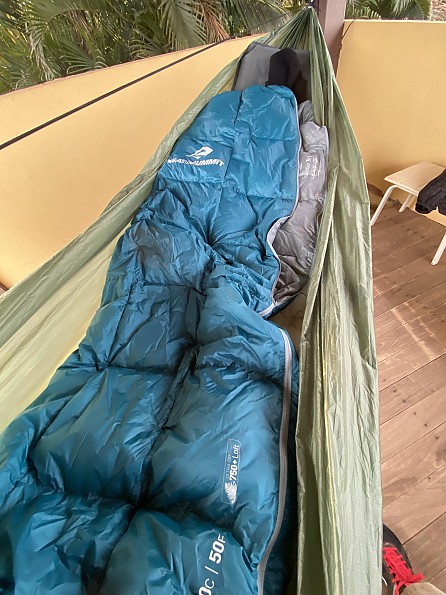
I keep mine cinched down because most of the times I use it 1/3 closed (lower part, to keep my feet in), and the top 2/3 as a blanket, as shown in the images. It’s super-comfortable and warm like that, and very rarely I close it full, especially with my hammock/bugnet (sock) combo which prevents cold drafts from entering the open parts.
Just the other day I had to sleep in my old empty house after moving out, and then the lower drafts of cold winter wind that entered under the doors forced me to close it for protection, because I was sleeping on my air pad only directly on the floor.
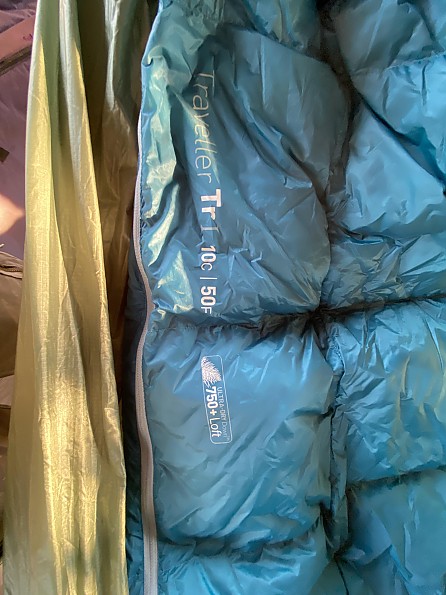
I also used it as a blanket when sleeping in hostels, and once as a traditional sleeping bag in a hostel with a suspect (dirty) bed because I’d forgotten my liner. Those experiences and others have showed me how versatile the TR1 is, which is something I really appreciate in any outdoor equipment. I can’t see myself moving back to traditional sleeping bags, except of course for high mountain explorations and trips when temps drop bellow zero (30°F) that require more protection and warmth.
What’s up with the stuff sack?
The TR1 is compact and lightweight as a warm season down sleeping bag/quilt. But I have a really hard time stuffing it into the provided compression sack. I’m no beginner, but honestly this proved a pain, and made me worry that forcing it into the sack could damage the fabric or the down, even in the short term.
So much so that S2S recommends storing it into the provided bag (in which it comes packed, BTW), which allows the TR1 to “breathe” and keep its loft.
In the end, I opted for an older slightly larger non-compressing sack that keeps it compact, yet not as compressed. This keeps it loftier for instant use and also eliminates the need to unpack and open it after every trip, which is certainly necessary to keep it in good shape.
And I’m using the TR1’s compression sack for my hammock/bugnet-sock combo which fits perfectly and can be compressed without problem.
Background
The S2S TR1 replaced my old and trusty Deuter Dreamlite 500 which is rated for the same temps but is synthetic filling and weighs 300g (almost 10oz.) more. I have a sub-freezing sleeping bag that only gets used when I’m traveling abroad or doing high-mountain trips and camping, but most of my outdoor activities can be done with warm-weather sleeping bags. All that considered, I’m really liking the TR1 because of its weight and versatility.
Source: bought it new
Price Paid: 260 USD (final local price with import taxes and delivery)
Enables me to go with a 40-liter pack for four days and three nights in summer.
Pros
- Lightweight
- Compresses smaller than any bag I've seen
- Good to use as a blanket
- Ultra sil compression sack included
- Storage cube included
Cons
- Drawcord with toggle, not zippered, bottom
With this bag, I can get my summer sleep/shelter system down to around 4 1/2 pounds. The bag compressed (15 oz) in its Ultra sil compression sack (blue) on left with a Sea to Summit Ultralight Pillow (2 oz) in the sack also. Next to it is the Marmot Tungsten UL 1 (pole bag, tent body, fly in an ultra sil (yellow) and stake bag (2 lbs 9 oz), and the Nemo Tensor mummy sleeping pad in it's stuff sack (15 oz) on the far right.
I just did a 4-day, 3-night solo backpacking trip in NY with a Gregory Zulu 40 (L) backpack with the above setup, a stove, pot, six freeze-dried meals, snacks, changes of clothing, a hydration bladder, a couple of Chute water bottles, a Sawyer Squeeze, a headlamp, other miscellaneous gear, and a pair of camp shoes (New Balance Minimalists, 12 ounces) in the pack's stuff pocket.
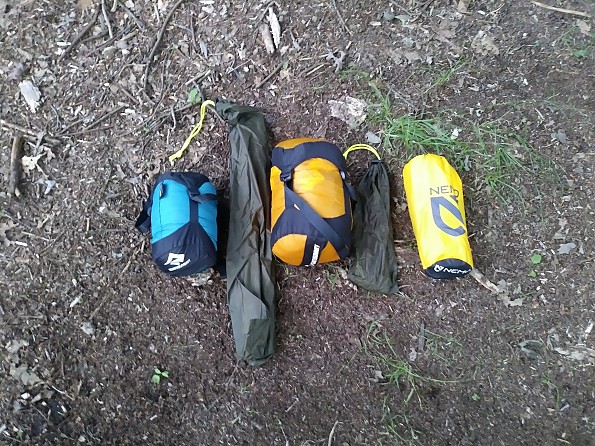
The Tr1 is an excellent warm weather optiion. It packs down to a liter and a half. It comes with a compression sack and storage cube. The storage cube zips up for travel, and unzips into a larger sack for storage. The ultra-sil compression sack is water resistant (it is not seam taped), but would cost $20 or more on retail sites. It is size XXXS.
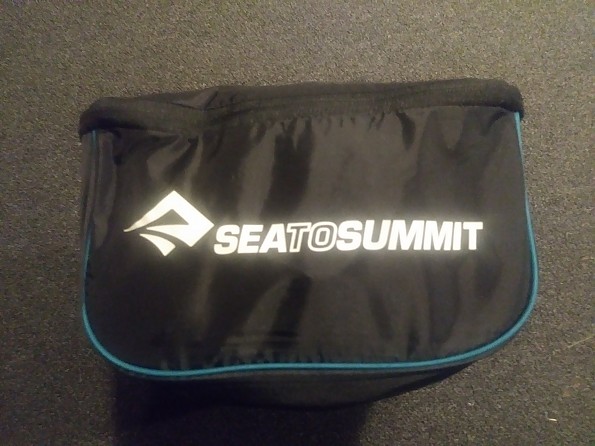 Above: the Tr1 in its storage cube zipped up for travel
Above: the Tr1 in its storage cube zipped up for travel
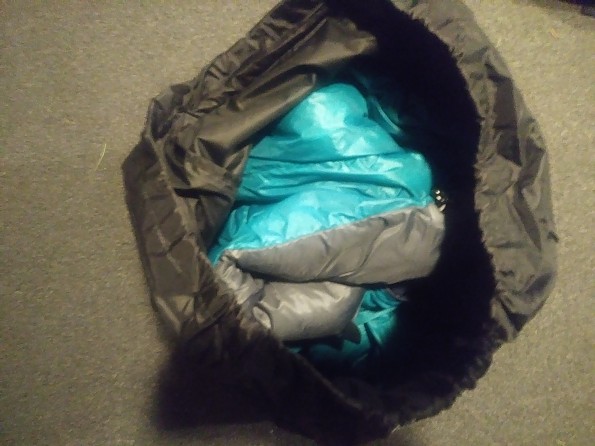 Above the bag in its storage cube.
Above the bag in its storage cube.
People I've shown this bag compressed are amazed at how small it is.
Below: the bag compressed.
Below: the Sea to Summit tr1 and Ultralight Pillow atop the Nemo Tensor in the Marmot Tungsten UL1.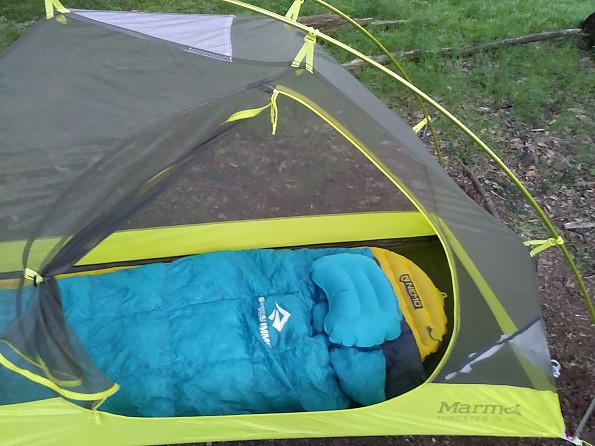
The bag does have one zipper that runs its length, which when upzipped allows it to be used as a blanket. The bottom has a drawcord, which when cinched removes some of its length; I'd say between 4-6 inches. If you are planning on using it cinched, and you are taller than 5'8", I'd recommend the large. I am 6'1" and own the regular. It is sausage like when fully zipped and cinched.
I understood this when purchasing because I wanted lightweight and small packed size. I'll only cinch it, and use it as a half bag (bag pulled up to my chest), on a much colder than predicted nights when I can wear an insulating layer with my arms outside the bag. You can also close the bottom drawcord, zip the Tr1 halfway up, and use the bottom half as a bag and the top half as a blanket/quilt.
The bag is perfect in warm weather, when a blanket is all you need or if you stay in a lodge, hut, cabin and don't want to sleep on the bedding provided.
Source: bought it new
Price Paid: $125 on clearance
This is a cost effective and more than adequate light minimal coverage for a quick summer outing in the woods. It is versatile enough for couch surfing relatives over the holidays. It is just wide enough to cover two cozy campers that are not too big in girth on a not chilly summer outing.
Pros
- Light
- Compacts well
- Foot area can be open or closed
Cons
- Not real warm
- Not useful for shoulder seasons
Originally bought for couch surfing relatives, but I found it useful as a comforter on a fall evening too. That opened the door to other uses.
Took it out for a July 6K ft elevation overnight in Sierra Nevadas and it was sufficiently warm in a bivy bag. I added a silk liner and it was okay during a chilly September night in the Cascades. Wife and I used it opened up fully with us in each our own silk liners and in a tent and it kept us comfortable through the night (down to low 30's).
I think our body heat and the silk liners made it work. I would have liked a bit more down in the product to take it down to a few more degrees rather than have to use a heavier quilt. Some modifications may be in order to adapt it to our varied needs and keep it light. The small vol when compressed is great with our small packs.
More clothing rather than more down filling might be the answer, but we have pretty much minimized our clothing to work for most conditions (excluding this sleeping portion). I would buy this again and would modify it as needed (filling +, - some of the zipper as I use open (unzipped) on the top nearly all the time).
Source: bought it new
Price Paid: on sale: $160
Your Review
Where to Buy
You May Like
Specs
| Regular | Large | ||
|---|---|---|---|
| Price |
MSRP: $219.00 Current Retail: $109.50 Historic Range: $109.50-$339.00 Reviewers Paid: $125.00-$260.00 |
||
| Best Use |
Ultralight Backpacking |
||
| Insulation |
Ultra-Dry Down 750+ Loft |
||
| Shell Fabric |
Ultralight 15D Nylon Shell |
||
| Bag Weight | 14.8 oz / 420 g | 1 lb 1.6 oz / 500 g | |
| Compressed Volume | 1.6 L | 2.4 L | |
| Compression Sack | XXXS - 2.5L to 1L | XXS - 3.3L to 1.3L | |
| Fill Weight | 7.1 oz / 200 g | 8.5 oz / 240 g | |
| Fits Up To | 6 ft / 183 cm | 6 ft 4 in / 192 cm | |
| Season Rating |
Summer |
||
| Temperature (EN rating) |
50º (Lower Limit) |
||
| Women's Temperature (EN rating) |
57ºF (Comfort) |
||



